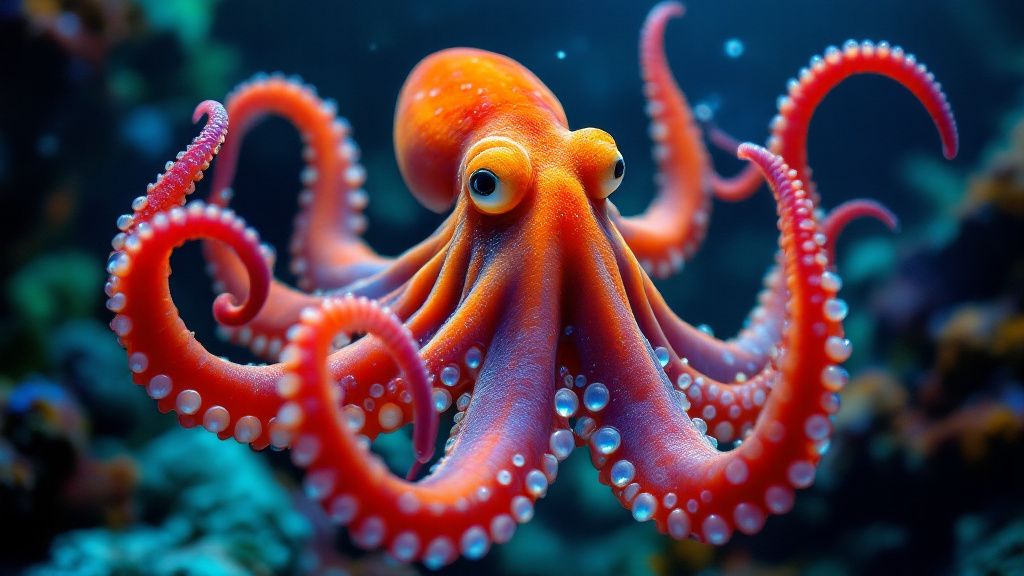
The Dumbo octopus, a fascinating creature scientifically known as Grimpoteuthis, is a shining example of nature's quirky marvels. Nestled in the deep-sea realm, these unique animals reside at depths averaging 13,100 feet, occasionally venturing as deep as 23,000 feet. Their distinctive ear-like fins bestow upon them an unmistakable charm, coupled with an adept ability to navigate the harsh conditions of their deep-sea habitat.
These fins allow Dumbo octopuses to propel themselves gracefully through the water, an adaptation crucial for maneuvering amid high pressures and frigid temperatures. Their hunting strategies are equally intriguing, utilizing their fins to generate currents that pull prey towards them, primarily feeding on small invertebrates on the ocean floor. This behavior, along with their scant natural predators, positions the Dumbo octopus securely within its niche, safe from many threats faced by shallower species.
A captivating aspect of the Dumbo octopus is its reproduction process. These octopuses use a specialized arm, the hectocotylus, for the transfer of spermatophores to females. This adaptation ensures successful fertilization in the sparsely populated abyssal depths. Moreover, juvenile Dumbo octopuses exhibit rapid growth, adopting behaviors that minimize predation risks, thus bolstering their chances of reaching adulthood.
Research reveals between 13 to 18 species of Dumbo octopuses, although this figure is debated, underscoring the need for continued investigations. Their elusive nature presents a challenge to scientists as these creatures often arrive ashore in compromised conditions, limiting comprehensive study opportunities. The Dumbo octopus's remarkable adaptations to withstand extreme pressures and temperatures make it a subject of continuous intrigue. Understanding these adaptations aids researchers in uncovering the evolutionary processes that have crafted such unique life forms in deep-sea ecosystems.
In a recent expedition off the Hawaiian coast, researchers captured rare footage of a Dumbo octopus, shedding light on its enigmatic behavior and emphasizing the necessity for conservation efforts directed towards peculiar marine life, including endangered species. Such studies pave the way for a broader understanding of how these uncommon pets and weird animal species adapt to their unusual environments, contributing significantly to animal discovery and the conservation narrative.

The Dumbo octopus stands as a testament to the wonders of evolutionary biology, epitomizing the extraordinary adaptability found within the animal kingdom. Belonging to the genus Grimpoteuthis, these unusual animals are distinguished by their ear-like fins, which facilitate graceful navigation in the deep sea. With 17 species confirmed, these octopuses belong to the umbrella octopus family, characterized by the web of skin that stretches between their arms.
The intriguing discovery of a new species, Grimpoteuthis imperator, exemplifies the advancements in scientific research. This species was identified through cutting-edge imaging techniques such as MRI and micro-CT, coupled with minimally invasive gene analysis. This approach marks a significant departure from traditional dissection methods, allowing researchers to study the biology and anatomy of these creatures without causing harm, representing a leap forward in ethical research practices.
One notable aspect of the Dumbo octopus, particularly the Emperor Dumbo octopus discovered in 2016, is their adaptation to deep-sea life. These octopuses inhabit extreme ocean depths—some species thrive as far down as 13,100 feet. Their gelatinous bodies are expertly crafted to survive high-pressure environments and the frigid temperatures of the deep sea. These intricate adaptations are crucial for their survival and illustrate nature's ability to craft unique animal adaptations.
Recent research into Dumbo octopuses underscores their ecological significance, particularly in nutrient cycling and preserving biodiversity within deep-sea ecosystems. These insights can offer valuable information about the health of these mysterious environments. Additionally, ongoing studies aim to deepen understanding of their reproductive habits and feeding techniques, further unraveling the ecological roles these creatures play.
The scientific community's embrace of minimally invasive methods has led to significant discoveries concerning the Dumbo octopus's anatomy, including novel features of their systemic heart. These findings highlight the importance of continuing ethical research to expand our knowledge of such unique wildlife. Discoveries like those documented in the study 'Holistic description of new deep sea megafauna (Cephalopoda: Cirrata)' published in BMC Biology underline the exciting potential of employing advanced, considerate techniques in marine biology. Researchers are now equipped to explore these incredible cephalopods like never before, making notable strides in understanding one of the ocean's most renowned weird animal species. For more on this remarkable study, you can view the published research.
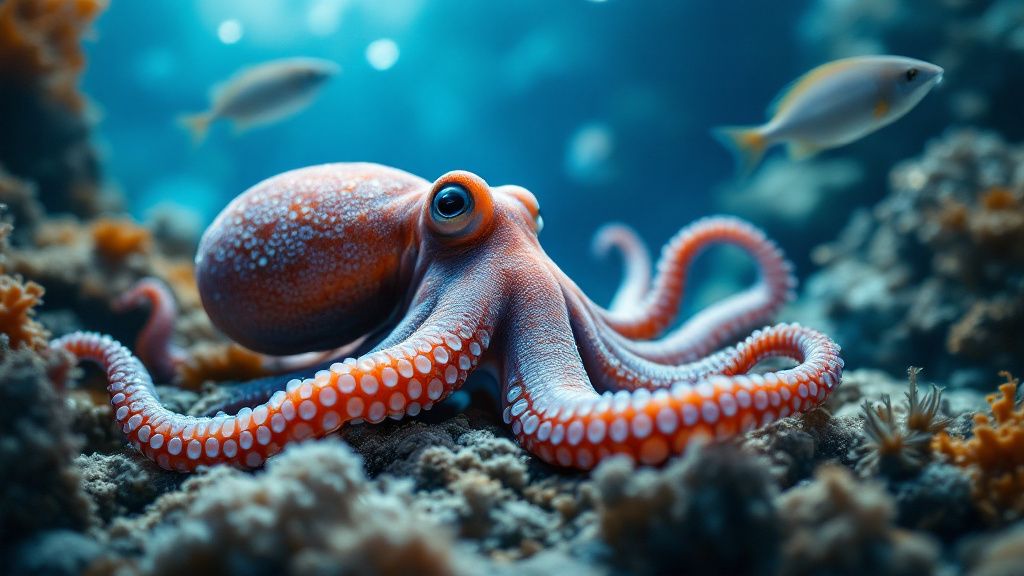
Shifting your perception of sea life requires recognizing the Dumbo octopus not as an oddity, but as a vital gem of the ocean ecosystem. This remarkable deep-sea cephalopod, known scientifically as Grimpoteuthis, captivates the imagination with its ear-like fins, resembling the beloved Disney character Dumbo. These fins are not merely aesthetic; they assist the octopus in skillfully navigating the ocean depths, ranging from 656 to 9,843 feet across various oceanic regions. Such adaptability exemplifies how these creatures thrive in extreme environments and highlights their ecological significance.
Recent studies have begun to illuminate the crucial role the Dumbo octopus plays within the marine ecosystem. By participating in nutrient cycling and serving as prey for larger predators, they maintain the delicate balance of deep-sea ecosystems. Their unique feeding strategy, which involves using their arms to capture small prey such as crustaceans, further emphasizes their importance in sustaining deep-sea food webs.
Changing the narrative around these creatures and others like them is essential for fostering conservation efforts. As many deep-sea species face threats from climate change, deep-sea mining, and pollution, appreciating their value is more important than ever. A mindset shift is not just about admiration but acknowledging the urgent need for initiatives that protect these lesser-understood marine habitats.
Educational programs focusing on ocean literacy are pivotal in promoting this understanding, particularly among the younger generations. By learning about the ecological roles and challenges facing species like the Dumbo octopus, young minds can develop a lasting appreciation for marine conservation. Such educational initiatives are crucial for cultivating a more informed and supportive public that champions the protection of our ocean's unique marine species.
The Dumbo octopus frequently serves as a symbol in marine conservation discussions, representing the need to safeguard the deep-sea environments that are still largely a mystery to us. Furthermore, increasing awareness and appreciation for these unique creatures can galvanize public support for broader conservation initiatives, highlighting their role in encouraging collective efforts to preserve our planet's marine biodiversity.
Through fostering a greater understanding and celebration of the ecological contributions of the Dumbo octopus, you help ensure the continuation of effective conservation strategies. In shifting how we perceive these extraordinary beings—from strange animals to rare oceanic treasures—you become a part of a vital movement aimed at protecting the fascinating species that inhabit the depths of our oceans. This perspective shift is further explored in discussions on the need for ocean conservation, as highlighted here.
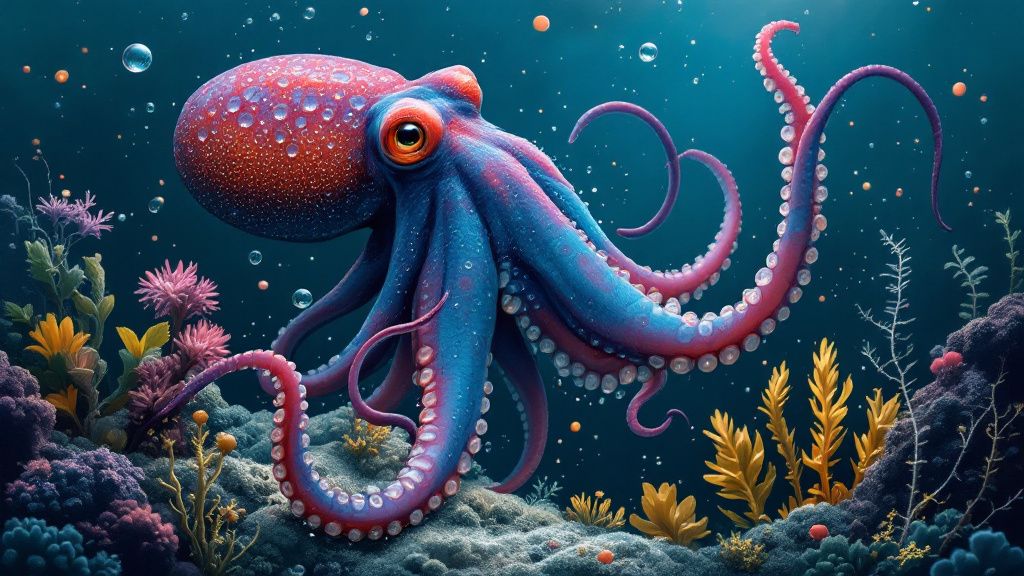
The habitat of the Dumbo octopus significantly influences its survival strategies, shaping its remarkable adaptations to thrive in the challenging deep-sea environment. Residing primarily at depths between 9,800 and 13,100 feet, with some species reaching 23,000 feet, these cephalopods face extreme pressure and frigid temperatures. To survive these conditions, Dumbo octopuses boast unique adaptations that are crucial in maintaining balance within their ecosystem.
One key adaptation is their soft, flexible body, allowing them to endure the immense pressures of the deep ocean. Their large eyes are designed to enhance vision under low-light conditions, enabling them to efficiently search for prey. Unlike other cephalopods that rely on tentacles for movement, the Dumbo octopus's ear-like fins provide a rare adaptation for navigation. These fins aid with swimming and enable graceful maneuvering within the water column, facilitating survival in high-pressure depths.
The reproductive strategies of the Dumbo octopus are equally fascinating. Unlike many marine species that depend on seasonal cues, these creatures can reproduce year-round, a tactic that boosts their resilience. Their comparatively short lifespan, ranging from 3 to 5 years, aligns with their need to adapt swiftly and capitalize on reproductive opportunities in the unpredictable deep sea.
Thriving in nutrient-scarce environments, Dumbo octopuses are equipped with low metabolic rates, allowing them to conserve energy efficiently. Habitat-wise, they are predominantly benthic, living on the ocean floor where they access food sources such as small crustaceans and other invertebrates. This tendency to remain close to the seabed highlights their crucial role in the underwater ecosystem.
Adding to their mystique, Dumbo octopuses can display a captivating range of colors and patterns. This ability might assist in communication or serve as camouflage in their dark, vast habitat. Although their unusual animal behavior and adaptations may seem strange, these features are the Dumbo octopus's key to surviving the ocean's depths.
A full understanding of their intriguing adaptations emphasizes the importance of further study and appreciation of these creatures within the marine world. For more on their unique capabilities, explore their features on their habitat.
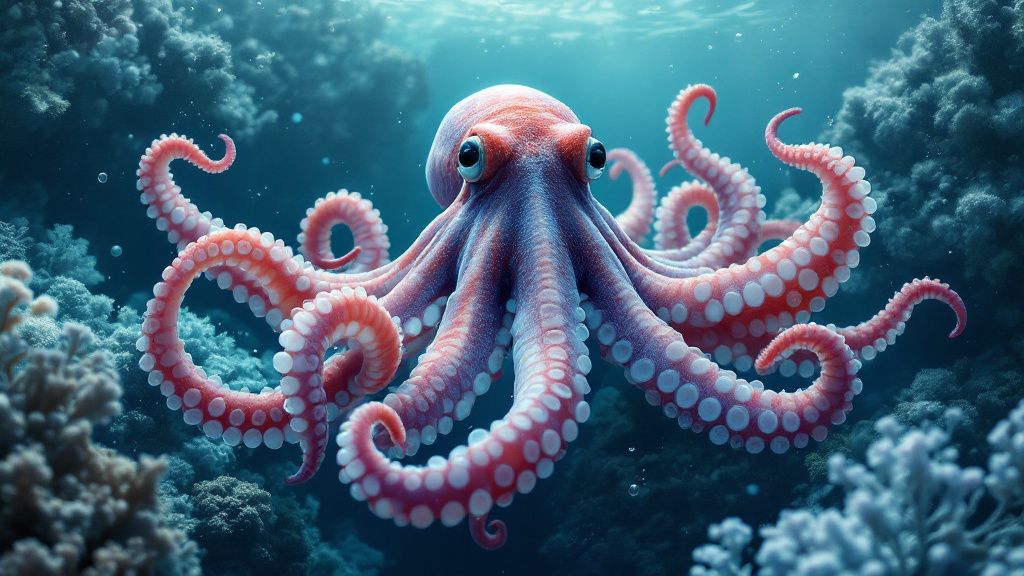
Looking ahead, the future of the Dumbo Octopus holds promising avenues for marine biology research, especially in the context of climate change. As deep-sea dwellers, these cephalopods have captured the interest of scientists striving to comprehend the broader impacts of warming oceans—predicted to rise by about 3°C by 2100—on marine life. The Dumbo octopus's ability to thrive despite these changes makes it a focal point for studies aimed at unraveling potential evolutionary paths for marine species amid climate fluctuation.
The role of the Dumbo octopus in nutrient cycling and biodiversity maintenance in deep-sea ecosystems underscores its ecological significance. Deeper insights into these functions are crucial as climate change continues to reshape oceanic environments. New research suggests that elevated temperatures could notably impact octopus embryos, potentially leading to lowered survival rates for future generations if greenhouse gas emissions are not curbed.
Another compelling facet of the Dumbo octopus's adaptability lies in its dynamic color-changing abilities and transparency, facilitating survival in its deep-sea habitat. However, these adaptations might be challenged as climate conditions shift. With over 300 octopus species worldwide, the Dumbo octopus stands out due to its unique traits and ecological roles—making it a critical subject for study.
A recent study from Ocean University in China delved into the implications of fluctuating temperatures on Dumbo octopus embryo development, highlighting significant impacts on their life cycle. This ongoing research aims to inform sustainable management practices, crucial for safeguarding marine biodiversity and ecosystem health in the face of a changing climate.
Understanding how these unusual animals adapt offers valuable insights that could inform global conservation strategies. As researchers and conservationists study these impacts, there's an emphasis on the urgent need for conservation initiatives to protect these species and their habitats. The health of the ocean's ecosystems relies significantly on such efforts, showcasing the importance of preserving these deep-sea marvels amid looming environmental challenges.
The pressing need for conservation in light of climate impacts is evident from recent studies emphasizing the crucial ecological role of the Dumbo octopus. Through continued exploration and awareness, the scientific community aims to devise strategies ensuring the survival of these unique creatures and, subsequently, the health of the entire marine ecosystem.
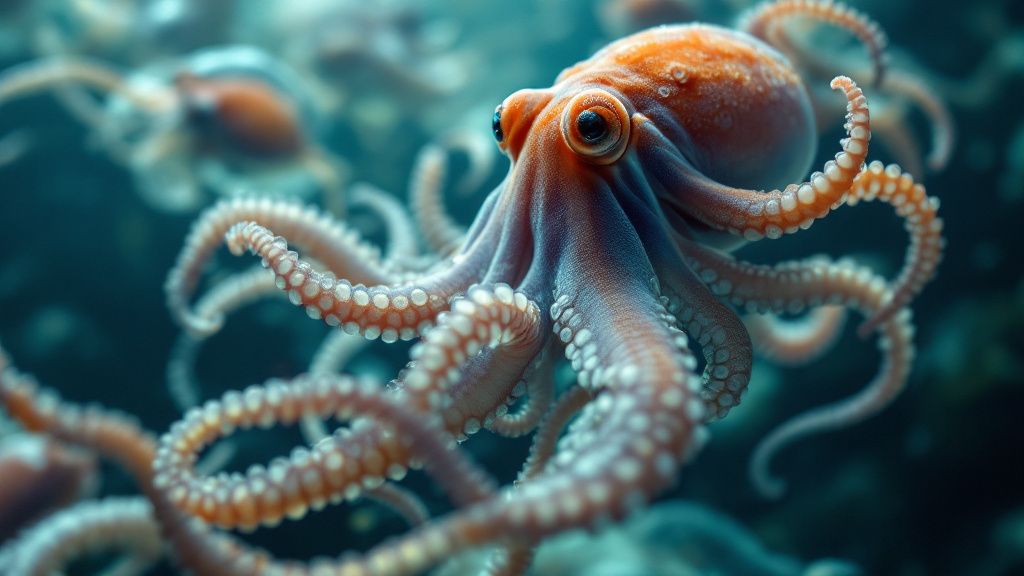
The Dumbo octopus continues to intrigue researchers and conservationists, offering glimpses into the mysteries of deep-sea life. Despite being listed as 'Least Concern' on the IUCN Red List, indicating that they are not currently threatened, these unique cephalopods face potential risks from human activities like deep-sea fishing and mining. However, specific population numbers remain elusive, as these creatures inhabit the ocean's most extreme depths, often beyond the reach of consistent observation.
With 17 known species under the genus Grimpoteuthis, the Dumbo octopus is notable for its ear-like fins, which distinguish it from other deep-sea dwellers. The depths they inhabit, some reaching up to approximately 13,100 feet, showcase their extraordinary adaptability to the high-pressure, cold environments of the deep ocean. Yet, this enigmatic habitat, characterized by its fragility and vast unexplored areas, makes it challenging to gauge the full extent of human impacts on Dumbo octopus populations.
The identification of the new species, Grimpoteuthis imperator, using advanced imaging techniques underscores the thrust of ongoing research in marine biology. Despite these advances, conservation efforts are hampered by the lack of comprehensive data on population size and distribution. As a result, implementing effective protective measures for these rare animals is complicated.
Dumbo octopuses boast a diverse diet, capable of swallowing prey whole, further illustrating their adaptability to the deep sea's demanding conditions. However, the quickly changing marine landscape, influenced by human activity and climate change, calls for heightened attention to their conservation.
Given the sporadic appearances of these cephalopods, their role in maintaining marine biodiversity cannot be underestimated. Increased awareness and dedication to conservation efforts are crucial for ensuring their survival, offering a point of reflection on how we view and protect these mysterious dwellers of the deep. Supporting research that expands our understanding of their ecological roles is paramount to adapting conservation strategies that can mitigate potential threats, ensuring that these remarkable sea creatures continue to thrive in an ever-evolving marine environment.
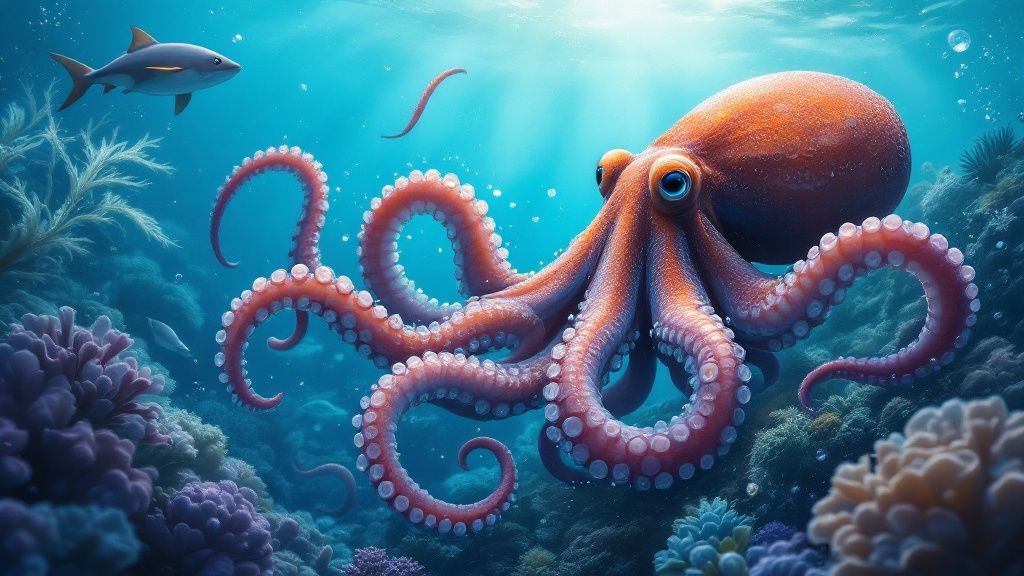
As we chart the future of marine conservation, the Dumbo octopus emerges as a pivotal figure in understanding and protecting unique marine life. Despite their current classification as a species of concern, largely due to threats from climate change, ocean acidification, and human activities that damage deep-sea ecosystems, these fascinating cephalopods play a crucial role in the health of marine environments. Recent studies stress the need to conserve Dumbo octopuses as part of broader efforts to maintain deep-sea biodiversity and ecological networks.
Belonging to the diverse phylum Mollusca, the Dumbo octopus showcases extraordinary evolutionary characteristics, including its color-changing abilities and transparency, vital for survival in its harsh deep-sea habitat. As a part of marine ecosystems, it serves as a key indicator species for the health of such environments, highlighting the Dumbo octopus's ecological significance.
Marine Protected Areas (MPAs) are becoming increasingly vital in the conservation of marine life. They provide sanctuary for species like the Dumbo octopus, helping to restore biodiversity and protect ecosystems from further degradation. The global 30x30 initiative, aiming to preserve 30% of the Earth’s lands and seas by 2030, underscores the importance of habitats essential for the survival of such species.
The growing scrutiny against octopus farming due to ethical concerns and potential environmental impacts further emphasizes the urgency for conservation strategies focused on maintaining marine integrity. This movement reflects wider efforts to safeguard marine life, prompting animal rights organizations and conservationists to push for a more profound understanding and protection of rare animals like the Dumbo octopus.
As attention and advocacy for these unique creatures increase, the standards for marine conservation could see significant elevation globally. By safeguarding the intricate web of life in the deep sea, you contribute to a resilient future for oceanic ecosystems and all their inhabitants. The Dumbo octopus, with its captivating adaptations and ecological roles, exemplifies the intricate balance of nature and the necessity of informed conservation efforts.
For more insights on the significance of marine conservation efforts, explore Marine Protected Areas and their impact on restoring marine biodiversity.
Get free resources, early access to new features and updates.
No spam. Just fun educational emails!